- Home
- Neal Asher
Prador Moon Page 6
Prador Moon Read online
Page 6
Now Tomalon could look within the ship…himself. He enjoyed access to every internal cam and could gaze through the eyes of every drone or robot. Diagnostic systems came online, and he checked the readiness of the U-space engines, the fusion engines, the multitude of steering thrusters. Information flowed through him and not one detail bypassed him. He felt like a god.
"So, history student, what is the lesson we AIs have learned?"
Confusion, but only for a moment, for his close link to the mind of Occam enabled him to understand the AI's drift. "I can quote direct from a lecture I once heard: 'After the eighteenth century neither bravery nor moral superiority won wars, but factories and production.' That concerned the World War II and America's intervention, though it is equally as applicable now."
"Quite," Occam replied. "Do you feel ready to take this product into the fray?"
"I do," Tomalon replied, but he felt a moment of disquiet. His mind seemed to be operating with crystal clarity now and he saw many other historical parallels.
"But you feel some disquiet, I sense?"
"The story of the Hood and the Bismarck occurs to me."
"Ah, I see: The Hood was the largest and most powerful ship available to Britain at the start of World War II, but Hitler's Bismarck quickly destroyed it. Perhaps now would be a good time for you to check the weapons manifests and acquaint yourself with the armament we carry."
Tomalon's perception opened into and upon enormous weapons carousels, rail-guns, beam weapons, a cornucopia of death and destruction. He saw that included in this cornucopia were the new CTDs—contra-terrene devices—and realised that, being a god, here were his thunderbolts.
3
They dined on mince, and slices of quince—
The Trajeen cargo runcible briefly came into view through the shuttle windows: five horn-shaped objects with tips overlapping bases in a curvilinear pentagon. Each of these objects was three hundred metres long with accommodation and R&D units clinging around its outer curve like the cells of a beehive. Tube walkways linked these conglomerations, and many solar panels glimmered like obsidian leaves. An orthogonal nest of plaited nanotube scaffolding poles enclosed the whole. Moria glimpsed the robots, one-man constructor pods and telefactors in the process of dismantling that scaffold. The glare of welders and cutting gear lit stars throughout the complex and plumes of water vapour swirled out like just-forming question marks over vacuum.
The shuttle swung in, taking the runcible out of view for a few minutes. Shadows then fell across the vessel and Moria saw some of those hexagonal units up close as the craft came in to dock. It shuddered into place, docking clamps engaged with a hollow clattering, followed by the whoosh of air filling a docking tunnel. After a moment, the disembarkation light came on and all the passengers began unstrapping themselves and pushing off from their seats to grab the safety rails leading to the airlock. Inside the shuttle it was nil gee, as in the tunnel leading to the complex.
"Best of luck," said Carolan as they reached the complex itself, then she slapped Moria on the shoulder and moved swiftly away. Moria guessed the woman's haste was instigated by the sight of the ECS officer heading this way across the embarkation area. She had only told Carolan that the AI contacted her concerning her Sylac aug and wanted to speak to her further, not daring to relate the circumstances of that contact. She pushed herself from the docking tube and settled down to the floor as the grav-plates within began to take hold.
"Moria Salem?" asked the man, smiling at her nicely.
"You know I am," she replied.
"Let's not be unpleasant about this," he told her, his smile becoming fixed.
Moria eyed him, realising he came suitably equipped to handle "unpleasantness." His shaven pate gleamed a head and shoulders above her and he probably massed about twice as much—none of that weight being fat. He was either a heavy-worlder or a man substantially boosted: bones and joints reinforced to withstand an implausible muscle mass.
"Where do I go?" Moria asked.
"With me of course." The man's smile lit again and it almost seemed genuine. Despite herself, Moria began warming to him.
He led her across the embarkation area to a nil-gee drop-shaft along which they towed themselves to a corridor. They traversed further shafts and corridors until reaching one of the tubes crossing vacuum between units of the complex. Moria now realised they were leaving the area in which she normally worked. Through the transparent tube wall she could see stars glimmering all around the swirled marble of Trajeen, and nearby lay a vertiginous view of the cargo runcible and surrounding facilities. A distant speck revealed itself as someone in a spacesuit, striding on gecko boots around a metallic curve, flipping a cable along behind. This gave scale to the view—an impressive though familiar sight to her.
The tunnel terminated at a coded security door. The man pressed his hand against a gene and palm reader of the kind that also ascertained that the hand's owner still lived—certain macabre scenarios briefly flitted through Moria's mind—then he input a code on a touch-plate.
"What's your name?" she asked.
He glanced at her. "George." An old and strangely prosaic name in this setting.
Beyond the door lay a whole unit Moria knew to be infrequently visited by the usual project crew. Rumour had it that its armour lay a metre thick and that it contained weapons arrays and its own independent drive. Grav dragged them to the floor within the inner lock, and while George opened the second door, Moria glanced up at the scanning drone suspended from the ceiling—suspiciously large power cables plumbed into it.
Inside, the carpeted corridor absorbed sound, and muted lighting from ornate light fitments lay easy on the eye. The carpet itself was decorated with repeating representations of the Trajeen AI and computer network. AIs were represented as red triangles, subminds were minor orange triangles, with variously coloured dots indicating servers and computers, and the whole being tangled in a three-dee web of com channels. The walls were clad with pillow-shaped foamstone blocks. Not so much bustle here—an oddly quiet and comfortable niche for something requiring no comfort. George led her to wooden panel doors and opened them onto a wide lounge alongside which long windows gave a panoramic view across the runcible.
"Please, take a seat." George gestured to a sofa.
Moria perched on the edge of one plush black fabric-covered sofa and surveyed the lounge. It seemed likely to her that much of this room's contents were either antique or indistinguishable reproduction. The oval table lying between the two sofas appeared to be made of genuine Earth-import wood, or maybe the table itself had been imported. Along one wall, on a worktop of polished stone, stood a collection of computers extending from the earliest PCs to present day. Behind them the racked wall contained a huge collection of ancient storage media: tapes, discs of many different sizes and formats, stacks of silicon data storage units, digital paper, carbon rod and early crystal, and much else she could not identify. In one corner squatted an insectile telefactor with forelimbs folded across its body as if it were in prayer; behind it lay the atmosphere-sealed shelves of a carousel packed with books. She realised the computers were all wired in and, by wear in the carpet below, that the telefactor frequently used them. It seemed the AI enjoyed access to much ancient information, though to what purpose she could not guess. A hobby? Historical research?
"A drink?"
Moria turned to see George standing by a drinks cabinet.
"Do you have greenwine?"
"Certainly."
He found a bottle Moria knew to be a rare vintage, and poured two glasses before coming over. He placed the drinks on the table and seated himself on the sofa opposite.
"So when does the AI talk to me?" She took a sip of her drink—ice cold in a crystal goblet lightly dusted with frost.
"It is talking to you now," George replied.
A beat.
"You're a Golem?"
"No, I am physically human but mentally a submind of the Trajeen System Carg
o Runcible AI." He gestured towards his chest. "This body was grown in a vat, the mind programmed as an adjunct to myself."
Moria had not known this to be possible. It might not be, for AIs did not necessarily tell the truth.
"Okay." She took another drink to hide her confusion, then decided to play along with this. "Other than the fact that the aug I'm wearing might be something other than standard, I've something else bothering me."
George waited.
She continued: "Why did Sylac use his own name if he is a fugitive?"
"He conducted many operations in his surgery in Copranus City, working under the pseudonym Doctor Runciman Hyde." George winced. "A rather telling pseudonym… Only with you did he use his correct name. He is arrogant and wants us to know about his work. By using his true name, prior to closing his surgery and moving on, he knew we would eventually find out, and track down all those upon whom he conducted nonstandard augmentation."
"He has gone then?"
"We are searching for him at present, but he had two weeks in which to make his escape. Precisely at the time you experienced the enhanced level of aug function aboard the shuttle, over a hundred others experienced the same. However, only through you did we identify him."
"So what now?"
"Now I must make an assessment of you, your aug, and the synergetic combination you represent." George leaned forwards and now Moria noticed something weird about his eyes: the irises seemed to have become evenly spoked and metallic. "I will make an optic linkage to your aug, and in a virtuality of your choosing, we will explore your potential or… otherwise."
"I suppose that virtuality is the only choice I have in this matter?"
"Precisely."
* * * * *
"I think we interrupted their dinner break," said Jean, adding, "It seems they like to play with their food."
Alan Grace, a tough and experienced ECS monitor, pulled himself down beside a laser drill rig and vomited. With no gravity to drag it down the vomit shot with amazing speed across ten metres of air space to splash on a wall. The other two ECS monitors were further back in the factory, short ropes securing them to the floor and one of them tightening a tourniquet just above the other's right knee. Below that knee remained nothing but shreds. The woman felt no pain though, the drug patch on her neck having sent her to glittering fairyland.
"Urbanus, find the grav-plate controls and see if you can route in power—slowly," Jebel instructed, keeping his tone succinct, factual.
Droplets of blood and other fluids swirled across the nightmare scene like plastic beads. There were three corpses here. The Prador had secured them to the wall with some sort of resin. The left-hand one, a man, had suffered most. His arms were gone below the elbows and what remained of his guts hung out. It seemed evident, by the ties above his elbows—little different from the tourniquet presently being applied to the wounded monitor—and by the tubes plumbed into his carotids leading to some kind of pressure bag, that the aliens had kept him alive while they took him apart. His arms were nowhere in the vicinity. It seemed obvious what the Prador had done with the parts they removed. The other two corpses were headless. One head spun slowly a few metres below the ceiling, whilst the other lodged amid some nearby pipework. Jebel guessed the Prador killed their prisoners upon sighting him and the others. He glanced down at his right hand and saw it quivering. Mentally he ticked things off: hostile, horrible-looking bastards, eat people, torture people. Redeeming characteristics: none found. He felt a mad giggle rising in his chest and stamped on it hard.
Turning away, Jebel closed his eyes and tried to distance himself from what he felt. But one fact kept replaying in his mind: these people were almost certainly civilians, so being a noncombatant just did not help. Cirrella's apartment lay a few floors down from here and some way ahead. He considered just leaving the others and going his own way, going to find out, but self-discipline and training won out in the end. By remaining part of the overall strategy to retake this part of the station he stood a better chance of helping her, and others like her. If he went off on his own he would probably end up dead. Simple really, but not something he could accept on an emotional level.
"I've rerouted connections," said Urbanus over comlink, "and Avalon is supplying power. The machinery will remain offline but I am beginning to power-up the grav-plates now."
Slowly, gravity returned. Throughout the factory, objects began settling to the floor. Jebel watched the beads drop and the corpses sag. He glanced back as other similarly insalubrious objects pattered down. His own feet shortly touched a floor becoming slick with blood.
"That's better," said Alan Grace, holding his gut.
Urbanus returned. "Avalon is sending others to secure this area." The Golem nodded to the wounded monitor. "They'll take her back to the nearest med bay."
Within minutes the backup team arrived, and medics tended the wounded monitor while others began to reconnect shattered optic junctions to pincams. Com became clearer and for a second or two Jebel found his aug function trying to reinstate. Via com, the station AI informed him, "You are now in command, Jebel Krong, ranking increased by two points. Continue your mission, which is to get out as many civilians as possible, but understand your time is now limited. We have confirmation that the Prador are returning to their shuttle. Once that shuttle departs, this station is likely to become the prime target of the mother ship."
Please let Cirrella be safe now…
"What about the ECS ships?"
"All destroyed."
It struck him in the guts. They won nothing here—they were just trying to limit their losses. His aug then fully reinstated long enough for him to receive details of the areas he must now sweep, but still no message from Cirrella. He decided that the moment they were recalled he would set out by himself and find her, but other things needed doing now.
"Very well." Jebel scanned his command. "We continue. I for one want to kill some more of these fuckers."
His team growled assent.
He led his comrades from the factory into further nil-gee areas, finally reaching the designated meeting point—a spherical chamber at the junction of numerous corridors in the centre of which stood a cypress tree, its limbs shattered. There he gave instructions to the other units, and they moved on.
"If they're retreating to their ship, we'll probably not run into any more ambushes," Jean observed.
"Okay, let's pick up the pace."
They moved faster for another quarter of an hour before Urbanus abruptly called, "Halt!"
Jebel glared at the Golem, but Urbanus, as coolly as his name, directed Jebel's attention to certain small cylindrical objects affixed to the ceiling ahead. "I don't know what they are, but they're certainly not ours."
"Shoot one of them," Jebel instructed.
In one smooth movement Urbanus raised and fired his carbine. The cylinders detonated in multiple blasts, filling the corridor ahead with fire and shrapnel.
"Bastards," Jebel commented, and slowed the pace again.
However, by Jebel's estimation they had penetrated halfway into the area held by the Prador. Finally they worked their way up to a long shopping mall with balconies overlooking a park extending through a kilometre-long tube. And once again sighted the enemy.
* * * * *
George—she could no longer think of the AI as a submind of the "Trajeen System Cargo Runcible AI"—was a presence at her shoulder while she demonstrated the trail of logic leading her to the truth about the crashed shuttles. Occasionally she surfaced from the virtuality to glance aside at the optic cable snaking down over her shoulder from the aug, and sometimes to take a sip of wine from her glass which, by some hidden mechanism, remained chilled all this while.
"U-space calculations again, and runcible mechanics," George instructed.
Moria began by modelling the cargo gates at Trajeen and Boh in her aug and started to run the calculations involved in sending something through—the same calculations an AI needed
to make, in nanoseconds, at each transmission. The Trajeen gate, relative to the one orbiting Boh, was travelling 70,000 kph faster. Simplified, the calculation involved the input of energy required to push the object through the Skaidon warp plus the energy required to accelerate it to 70,000 km/h so that basically, when it came out of the gate at the other end, it neither accelerated nor decelerated. But that was an extreme simplification. Between the gates, in U-space, Einsteinian rules ceased to apply while the object accelerated to a speed beyond C, relative to realspace, though in U-space where such measures did not apply it moved not at all and no time passed… didn't really exist. Moria didn't go there, that being the territory of the AIs. She concentrated on the simpler calculations, for though the broad difference between the two gates was a speed of 70,000 kph, obtaining the exact figure involved factoring in angular momentums and solving rather esoteric force vectors. Another factor in the calculation was the C energy, this being the input energy of the transmission and the energy drawn into the runcible buffers at the destination runcible. The first transmission ever conducted had been unbuffered. A pea was sent, in deference to Iversus Skaidon's obsession with the poem "The Owl and the Pussycat" by Edward Lear—a beautiful pea-green boat, though later "pea-green" being assigned to a particle tentatively identified as a tachyon. Other terms were also later assigned: travellers became quince and the gates became runcibles. The pea came out of the receiving end where the Einsteinian universe ruthlessly reapplied its rules. It exited at a fraction below light speed and caused an explosion that vaporized most of the surrounding base, killing numerous researchers. Luckily, Moria felt, they decided not to make the test using an owl or a pussycat… or a boat. She solved the vectors, quickly and efficiently.
"Impressive," said George, "though still the product of linear thinking."
"A fact of which every human runcible technician is aware," Moria replied dryly.
Humans who worked on runcibles were endlessly frustrated by this science which lay completely at a tangent to human linear thinking. Yes, a human could comprehend sections of the mathematics and complex technology of everything outside the Skaidon warp, and with augmentation a single human might one day be able to encompass it all. But past the warp you stepped beyond an event horizon not dissimilar to that of a black hole. The rules broke down, things started to make no sense to a product of biological evolution. Every object transmitted through a runcible came with its own information package detailing its energy vectors, vectors which also involved time. In U-space all Skaidon warps are in the same place at the same time which is no-time, in no-space. The object doesn't cease to exist for there is no time for it to do so. How do the AIs controlling the receiving runcibles know when to pull the object out? By reading the information package. Essentially everything ever transmitted or to be transmitted exists in U-space… where nothing exists but does… It gave Moria a headache just to try to encompass the twisted logic without getting involved in the mathematics and technology involved in what was called "the spoon." That headache became worse when she contemplated such things as time-inconsistent runcibles and the possibility of receiving something before it was ever transmitted.

 The Bosch: A Novella (Polity Universe)
The Bosch: A Novella (Polity Universe)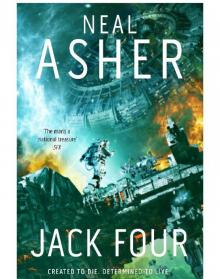 Jack Four
Jack Four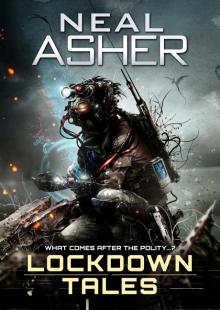 Lockdown Tales
Lockdown Tales The Warship
The Warship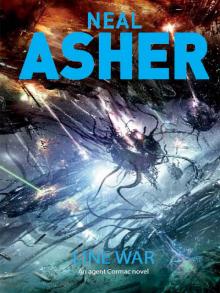 Line War
Line War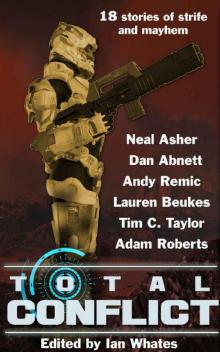 Total Conflict
Total Conflict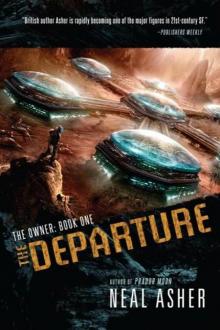 The Departure
The Departure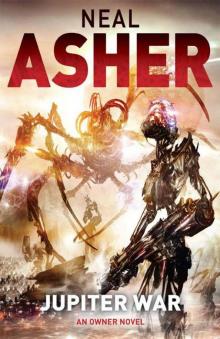 Owner 03 - Jupiter War
Owner 03 - Jupiter War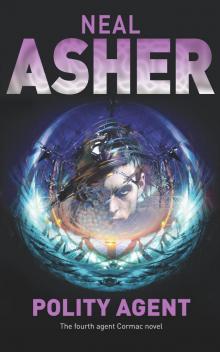 Polity Agent
Polity Agent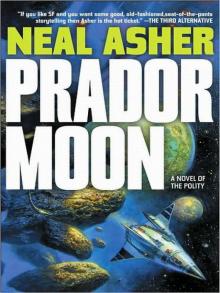 Prador Moon
Prador Moon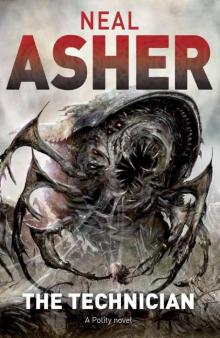 The Technician
The Technician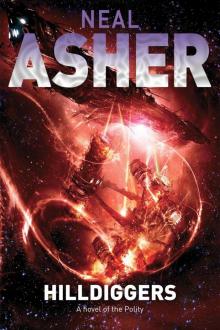 Hilldiggers
Hilldiggers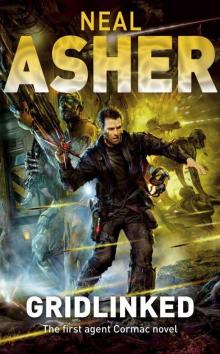 Gridlinked
Gridlinked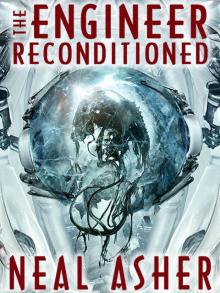 The Engineer ReConditioned
The Engineer ReConditioned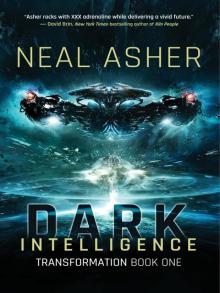 Dark Intelligence
Dark Intelligence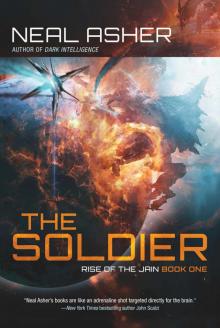 The Soldier: Rise of the Jain, Book One
The Soldier: Rise of the Jain, Book One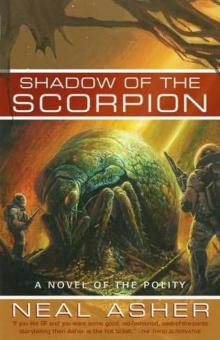 Shadow of the Scorpion p-2
Shadow of the Scorpion p-2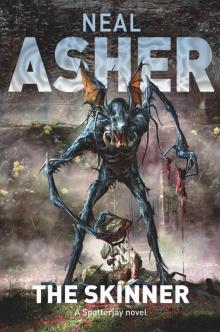 The Skinner
The Skinner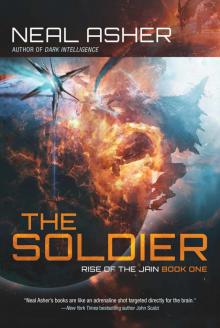 The Soldier
The Soldier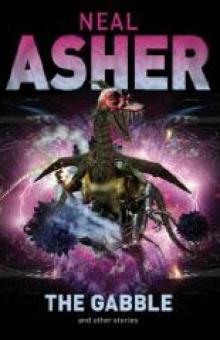 The Gabble p-13
The Gabble p-13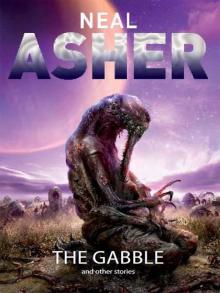 The Gabble and Other Stories
The Gabble and Other Stories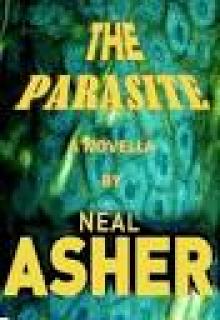 The Parasite
The Parasite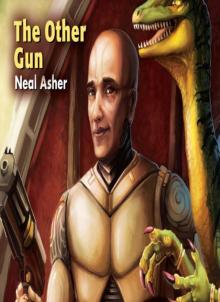 The Other Gun
The Other Gun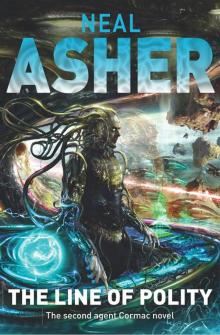 The Line of Polity
The Line of Polity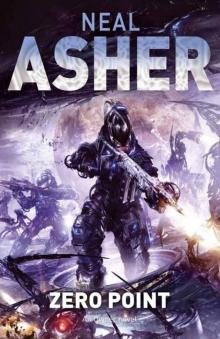 Zero Point (Owner Trilogy 2)
Zero Point (Owner Trilogy 2)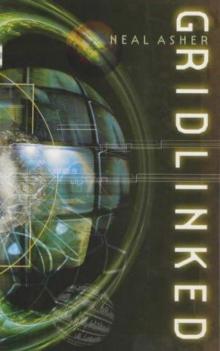 Gridlinked ac-1
Gridlinked ac-1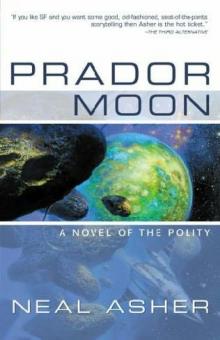 Prador Moon p-1
Prador Moon p-1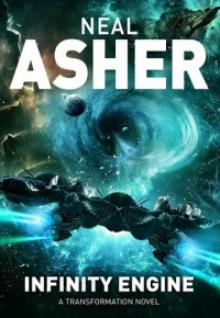 Infinity Engine
Infinity Engine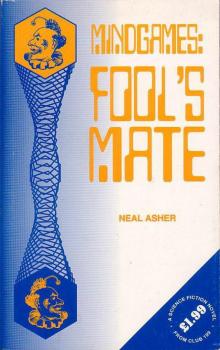 Mindgames: Fool's Mate
Mindgames: Fool's Mate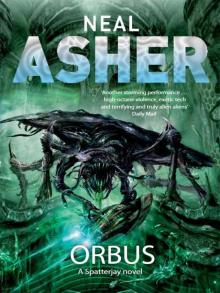 Orbus
Orbus Africa Zero
Africa Zero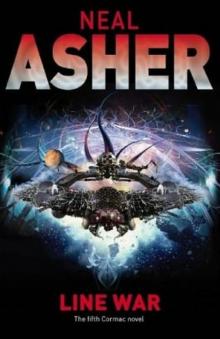 Line War ac-5
Line War ac-5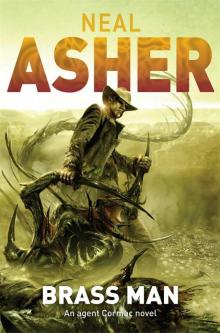 Brass Man
Brass Man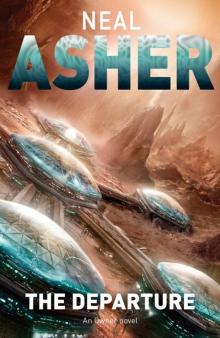 The Departure to-1
The Departure to-1 Cowl
Cowl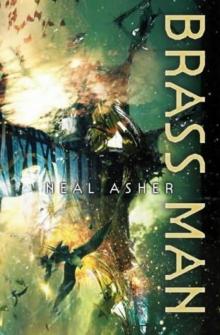 Brass Man ac-3
Brass Man ac-3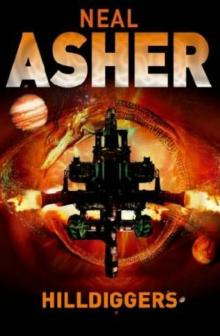 Hilldiggers (polity)
Hilldiggers (polity)![Greg Bear - [Eon Trilogy 1] - Eon (rescan) (v1.0) Read online](http://i1.bookreadfree.com/i2/04/08/greg_bear_-_eon_trilogy_1_-_eon_rescan_v1_0_preview.jpg) Greg Bear - [Eon Trilogy 1] - Eon (rescan) (v1.0)
Greg Bear - [Eon Trilogy 1] - Eon (rescan) (v1.0)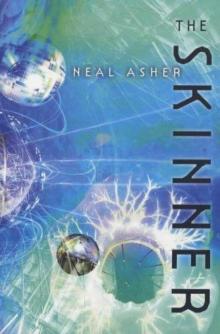 The Skinner s-1
The Skinner s-1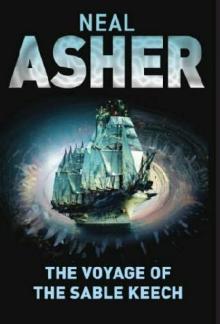 The Voyage of the Sable Keech s-2
The Voyage of the Sable Keech s-2 The Line of Polity ac-2
The Line of Polity ac-2 War Factory: Transformations Book Two
War Factory: Transformations Book Two Polity Agent ac-4
Polity Agent ac-4